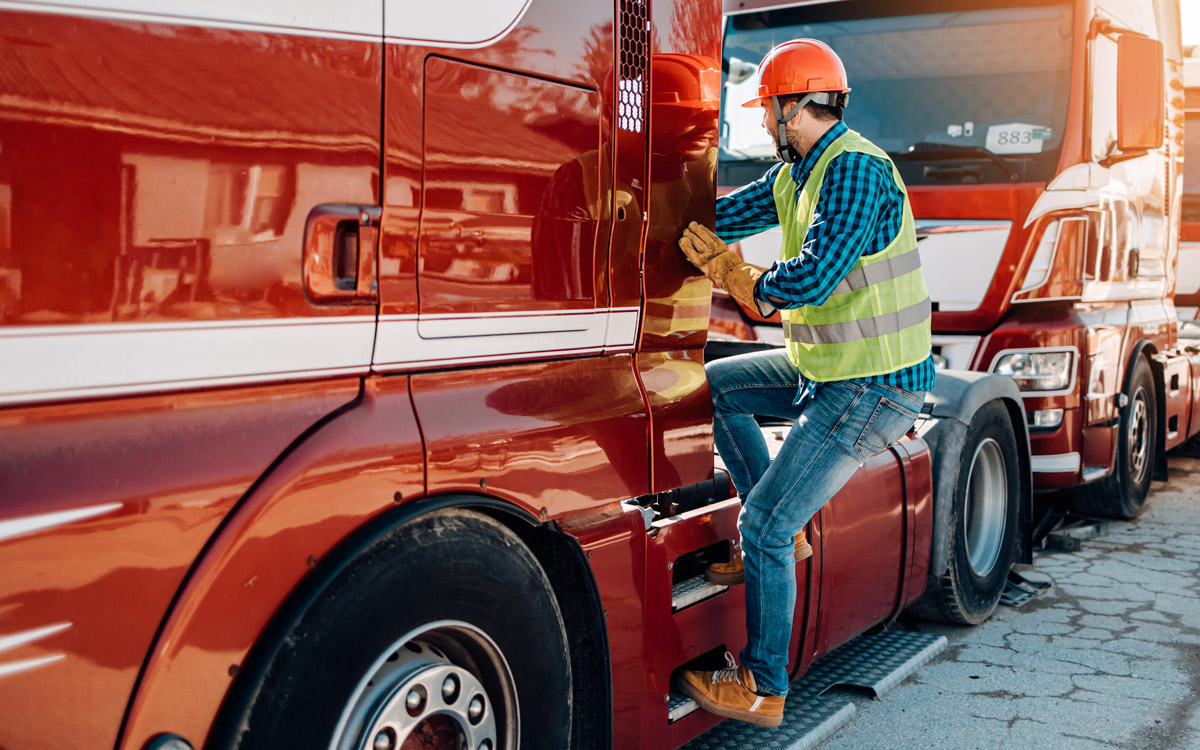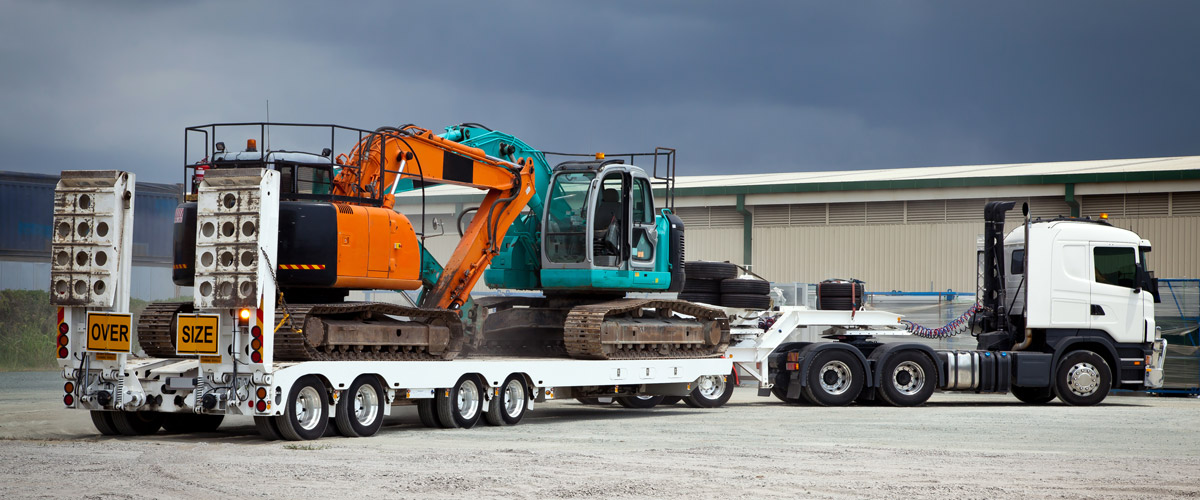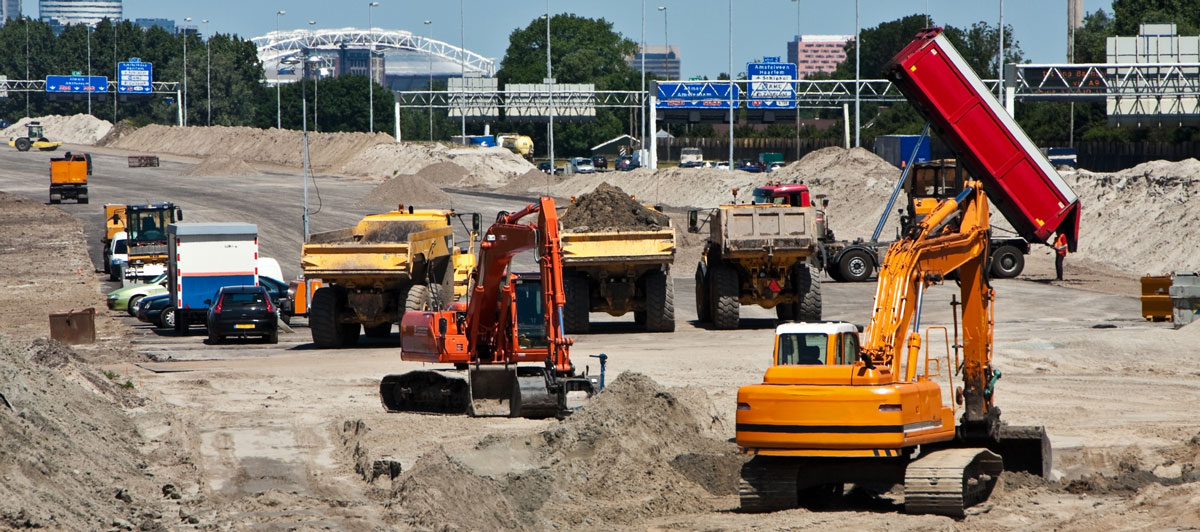5 Key Heavy Vehicle Safety Technologies
Improving heavy vehicle safety technologies is a challenge for fleet managers and trucking companies dealing with rising running costs and only a...

When it comes to heavy vehicle safety, is your organisation doing all that it can in 2022 to save the lives of its drivers and others?
A 2021 study by Monash University anticipates the number of heavy vehicle drivers involved and injured in road crashes will increase by 23% by 2030 (over 2017) figures.
With such worrying figures, here are our Top 10 Heavy Vehicle Safety Tips for Fleet Managers to improve safety around heavy vehicles.
Click on each heading for further details.
An Anti-Rollaway solution will stop a heavy vehicle from accidentally rolling-away. It automatically brakes a vehicle if the driver exits the vehicle without properly applying the park brake. This is critical as too many drivers are run over by their own vehicle – either from the front or rear and even on very minimal inclines. See our Anti-Rollaway Solutions here.
Reversing sensors reduce the risk of a vehicle reversing into someone or something. Most heavy vehicles do not have any visibility through their rear vision mirror, having to solely rely on their side mirrors – this means they have a gigantic blind spot at the rear of their vehicle. Very few drivers get out to inspect what’s behind the vehicle and they won’t know if someone walks behind their vehicle. A reversing sensor solution like that offered by MAX-SAFE Reverse Watch monitors behind a vehicle for any obstacles or people and can actively brake a vehicle when a risk incident is detected. Solutions are also available for articulated vehicles with trailers and hook lifts.
Blind spots are not just in the rear of the vehicle. For all heavy vehicles there are blind spots on each side with some areas fully obscured and other areas partially obscured. A blind spot can be up to two lanes wide and 10 metres long, highlighting the danger of driving on multi-lane roads and changing lanes or turning. See the diagrams here for the blind spots in common heavy vehicles and here for the range of blind spot monitoring solutions that MAX-SAFE provides. Ultimately you need 360-degree visibility around your vehicle.
With increasing bicycle riders on our roads and pedestrians in our cities, it’s important that trucks have safety measures in place to protect vulnerable road users, particularly when turning left. This would prevent terrible tragedies like what happened in Southbank in Melbourne in 2021 when five people were injured at a busy city intersection. MAX-SAFE offers solutions such as Corner Watch that can detect and warn a driver (through an audible alert) of a human, moving object (i.e. bicycle or motorbike) so they are aware of the risk before turning left. The safety solution can be setup to automatically brake a vehicle. Options also exist in to install an external audible alert to advise Vulnerable Road Users of a left turning vehicle. This technology is also available for right turning heavy vehicles to alert drivers of a vehicle turning right. As heavy vehicle drivers know, you have to be in the middle lane or one lane over when marking a turn at an intersection.
Last, but not least, advanced technology, like our Front Watch Solution warns drivers of Vulnerable Road Users in front of them, for example a straggling or impatient pedestrian, a mother with a pram, or a cyclist that has pulled up in front of them at an intersection for a quick take-off when the lights change. Accidents like this one in Brisbane in June 2020 perhaps could have been avoided if the vehicle was fitted with forward sensors and/or camera.
Seatbelts save lives – it is a known fact. Now that logic, and safety measure, is available for buses and onsite transport vehicles. Even then it can be hard to ensure everyone is correctly belted up. A seat belt warning system will alert a driver if anyone is not clicked in properly or unbuckles while they are travelling along. Aside from protecting occupants, this solution also saves drivers the heartache of being witness to untold injury in the event of a crash or rollover event. And a bonus reason why this is a great heavy vehicle safety tip: it also saves drivers from an expensive fine and demerit points. Highway camera are catching non-seatbelt usage along with mobile phone usage.
Often the only way to ensure you don’t speed in any vehicle is to have speed controls set. MAX-SAFE has the option to set up to 8 different speed limits on a vehicle – and a driver cannot override them. You can even set location specific speed limits for example on a building site, mine site or near a school.
Part of ensuring the efficiency and minimising wear and tear of a heavy vehicle is to manage RPM control to a host of vehicles, like cement trucks, crane lifters and wood chippers, that need the motor running to operate. Having the motor running can increase the safety risk of a vehicle if it should over rev or jump into gear etc. Our RPM Control Solution optimises engine RPM and enhances onsite safety, while minimising wear and tear on a vehicle.
In-cab solutions to monitor and manage driver behaviour can ensure drivers are alert and focussed on the road at all times. Such systems can alert drivers of the need to take a break or not to be distracted with a phone or other item in the cab. It’s like having a second set of eyes on the road helping drivers perform at their optimum. Such solutions can also input into fleet management software advising fleet managers of drivers that need more coaching or warnings.
Ultimately the best tip we can give heavy vehicle safety managers is to have everything integrated into a single safety eco-system that is also integrated with leading fleet management software. This way, fleet managers know that all the elements are designed to work together and have a 360-degree safety web around their vehicle, protecting drivers, other people, their vehicle and other property. Such fleet management solutions can alert Fleet Managers of drivers or vehicles that have been involved in a safety incident or averted an incident due to the sudden actions of the driver or vehicle. It gives critical driver and vehicle information and oversight, plus identification of location or site hazards for further investigation. See the MAX-SAFE Safety Eco-System for further info.
Having a heavy vehicle fully-speced with the latest – and affordable – safety technology is an important and prudent measure to save lives and manage company risks and costs. In our list of Top 10 heavy vehicle safety tips this last piece of advice is not one to be overlooked: – ensure that your staff are suitably trained on the use of the safety technology. Often the safety systems happen in the background as they are active solutions, however, it’s important for operators to do daily safety checks when they start up their motors each day and also to know how to reset a safety solution once it has been activated, e.g., a park brake mechanism. To this end, MAX-SAFE provides online, intuitive and short smartphone safety training and checklists for fleet managers and their heavy vehicle operators to follow.
EMPLOY SAFETY SOLUTIONS, TOOLBOX AND SAFETY TIPS
Over the past two decades and in the coming two decades there will be a growing number of people becoming heavy vehicle drivers, for example, people working for supermarket deliveries around our towns and the increasing reliance on freight given our growing population and regional centres. Unlike the past, many will not have come from an environment where they grew up driving heavy vehicles, e.g., farmers. They won’t have the years of lived experience that truck drivers in the past have had. Becoming a good and safe truck driver takes time and experience. Ensuring organisations and fleet managers are providing the best safety solutions for their heavy vehicle fleets is a critical measure in reducing the road toll and the costs – actual and personal (injuries, PSTD) – related to heavy vehicle accidents.

Improving heavy vehicle safety technologies is a challenge for fleet managers and trucking companies dealing with rising running costs and only a...

Last year SafeWork Australia released a newguidefor the construction industry to reduce the risk of traffic accidents and fatalities caused by...

In 2020, Transport for NSW released theirrecommendationsfor safety technologies for heavy vehicles on NSW roads and working on government projects....